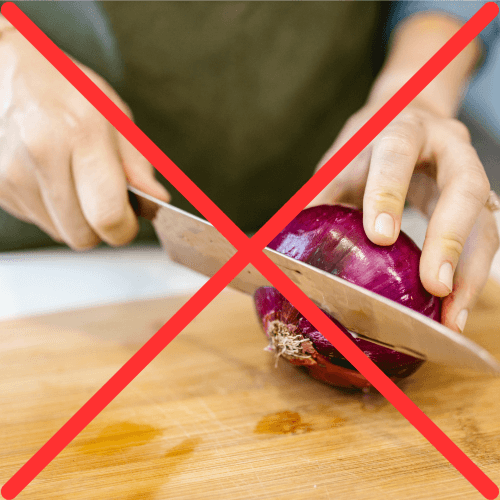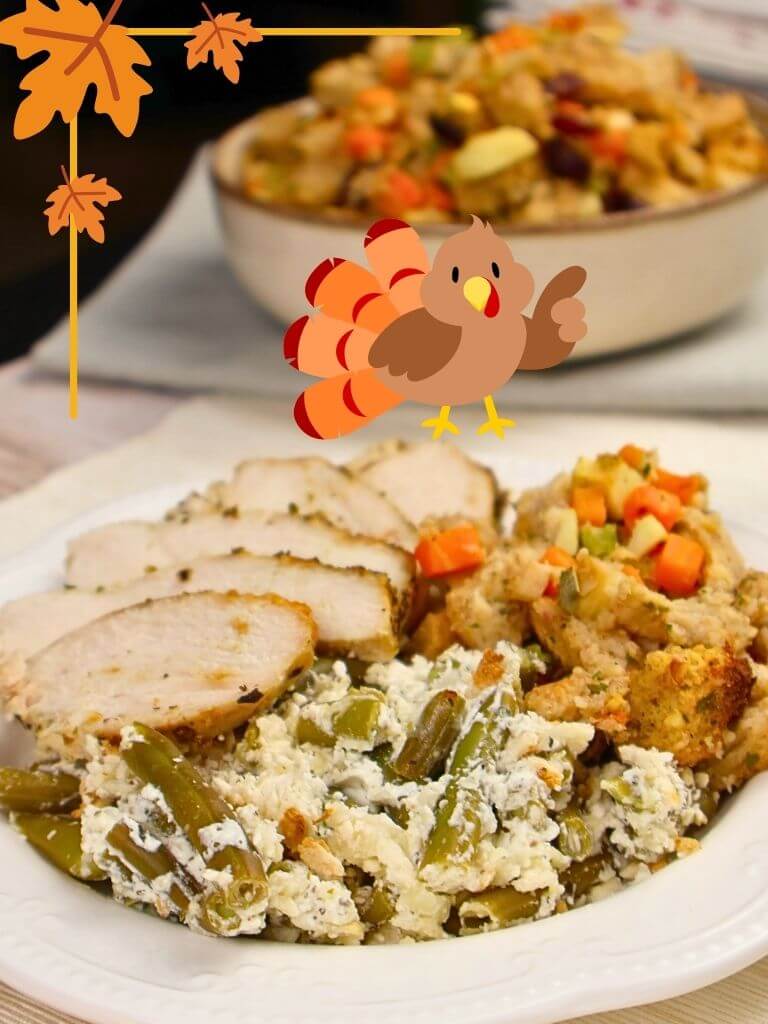Did you know that cross-reactivity is a potentially problematic aspect of food allergies that often goes unnoticed? It can be challenging to identify, especially when it comes to alliums (like onions, garlic, and shallots). Because of this, I’m dedicating the fifth part of my onion allergy survival guide to onion cross-reactivity.
In this article, you’ll find out more about allium family plants, why cross-reactivity happens, whether you can be cross-reactive to all allium plants, and some tips and tricks on how to manage onion cross-reactivity with other alliums.
Check Out My Surviving Onion Allergy Guide:
What are alliums?
Before diving into cross-reactivity, let’s define what alliums are. Alliums are a group of plants that belong to the Amaryllidaceae family. Until recently they were part of the lily (Liliaceae) family but with more genetic research, scientists decided that alliums need their own family – Amaryllidaceae.
Alliums are one of the most popular culinary ingredients in the world. They are known for their distinct flavors and aromas. Because of that, they are the most widespread ingredient in food production, and so many processed foods, condiments, and sauces are prepared with alliums.
Alliums are:
- onion
- garlic
- leeks
- scallion
- chives
- ramps
- shallots
What is cross-reactivity?
Cross-reactivity occurs when the immune system mistakenly identifies similar proteins in different substances as a threat.
When it comes to alliums, it means that if you’re allergic to one member of the allium family, such as onion, you might also experience allergic reactions to others, even if you haven’t been directly exposed to them before.
Example: You can have an onion allergy and be also allergic to shallots and garlic, but not to the other alliums. There are cases when people are allergic to all plants in the allium group.
Allergic responses to alliums
Due to cross-reactivity within the allium family, someone with an allergy to one allium like onion might experience allergic responses when consuming others.
Allergic reactions to alliums, including onion, can manifest in various ways, ranging from mild discomfort to severe and life-threatening symptoms like anaphylaxis. These reactions typically involve the body’s immune system overreacting to specific proteins present in allium plants, triggering the release of histamine and other chemicals that cause inflammation and other allergic symptoms. We can divide symptoms into immediate and delayed.
Immediate allergic response
An immediate allergic response results in rapid-onset symptoms shortly after consuming alliums or foods containing alliums. These reactions typically involve the immune system’s IgE antibodies and can range from mild itching to severe anaphylaxis.
Delayed allergic response
In some cases, individuals may experience delayed allergic response, with symptoms appearing hours or even days after consuming alliums. These delayed reactions can make it challenging to identify the trigger without thorough monitoring of dietary intake.
It is important to know that symptoms can develop a few seconds after consuming alliums, or a few hours. Symptoms can range from mild ones to life-threatening ones, and they should always be taken seriously.
Why do some individuals have onion cross-reactivity?
The primary reason why some individuals react to multiple alliums stems from the similarity of proteins across different members of the allium family. Alliinase enzymes are one potential culprit being investigated, but there might be others involved. These proteins might be so alike that the body’s immune system mistakenly identifies them as a threat, leading to a reaction even when consuming a different allium than the one initially causing the allergy. For example, the proteins found in onion may closely resemble those in garlic or shallots, triggering onion cross-reactivity in individuals with onion allergies.
Factors influencing onion cross-reactivity
Several factors can influence the likelihood and severity of onion cross-reactivity. These include:
Diagnosis and testing for onion cross-reactivity
Diagnosing onion cross-reactivity often involves a combination of medical history review, allergy testing, and sometimes, oral food challenges. It always starts with a doctor reviewing your medical history to understand your symptoms and potential triggers. Based on this review, they will recommend the next steps. Some of the steps are an elimination diet, skin and prick test, blood test, and oral food challenge.
One common approach involves an elimination diet. This means temporarily removing alliums from your diet for a set period to see if your symptoms improve. Your doctor might also recommend keeping a food diary to track your intake and reactions.
There are two main types of allergy tests, and they are commonly used together:
Oral food challenge: In some cases, an allergist may recommend an oral food challenge under strict medical supervision. This involves gradually increasing doses of allium-containing food while closely monitoring for reactions. It’s crucial to remember that oral food challenges should only be done by a healthcare professional due to the risk of severe allergic reactions.
After a diagnosis, your allergist will work with you to develop a personalized management plan to help you avoid accidental exposure to alliums and cope with any reactions that might occur.
Lifestyle adjustments when you have onion cross-reactivity with other alliums
Grocery shopping
Grocery shopping can be a bit daunting because onions and other alliums don’t have to be listed on the labels. Producers usually hide them on the labels under “natural flavoring”, “spices” and “flavoring”. Whenever you are not sure if the product you want to use is safe, contact the producer and ask them. Often they are very friendly and they will let you know if they are using alliums in their products.
Create a list of safe products, and whenever you find an item in the shop that is safe for you, put it on this list. It will help you with grocery shopping, and finding safe items quickly.
Always stock up your pantry with safe allium-free products.
Cooking
Cooking without alliums is easy, delicious, and it can even save you time. Substitute onion and other alliums with vegetables like carrots, celery, and parsley root, and season the food with herbs. For more information about how to substitute alliums check out my Allium substitute guide.
Sometimes cooking can be challenging, especially when you don’t have an idea what to cook. On my food blog, you will find flavorful recipes without alliums. Head over to the recipe section, and get inspired for dinner. I’m sure that you will find something delicious.
Social gathering and dining out
Social gatherings and dining out are extremely fun activities, and you really don’t want to miss them. Do not let your allergy stop you from enjoying these things.
- Gatherings – always inform your host about your allergy and ask what kind of food they are planning to serve. Offer to bring something that will accommodate your food allergy. In the worst case, you will be able to enjoy a dessert, but in the end, you are not attending the gathering to eat but to hang around with your family and friends.
- Dining out in a restaurant can be a bit tricky if you are trying a new place. The best thing you can do is to avoid attending during rush hour so you can minimize the risk of order mix-ups. The second thing is to communicate with the restaurant about your allergies. The majority of the time, chefs can alternate your meals to accommodate your allergies.
Conclusion
Onion cross-reactivity with other alliums occurs when the immune system mistakes similar proteins in different substances as a threat. This means you can be allergic to onions and experience reactions to garlic, shallots, or potentially all alliums. In this guide, I’ve offered insights into cross-reactivity, symptoms, diagnosis, and life adjustments.
Living with an onion allergy and allium cross-reactivity can present challenges, but understanding the condition and implementing effective management strategies empowers you to live a full and enjoyable life. Don’t let your allergy stop you from enjoying social gatherings with your family or friends and eating in a restaurant. Tell them about your allergy and see how they can accommodate you.
Remember, you’re not alone! Many resources are available to support you on your journey.
Disclaimer: This overview of onion cross-reactivity is only for information purposes and it does not replace advice from your healthcare provider. All the information here is only to inform you, not to diagnose you. If you have any symptoms or you suspect that you have an onion allergy, consult your GP first.





